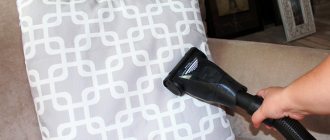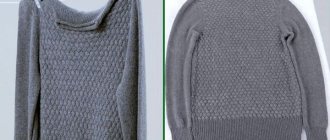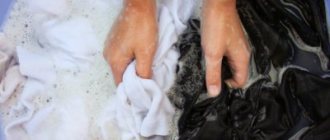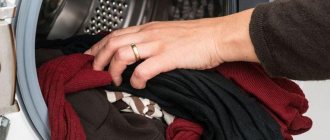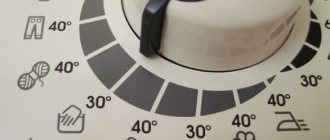When the wind is blowing outside, the cold is chilling to the bones, or a snowstorm is swirling, you really want to keep at least a little warmth: wrap your neck with a woolen scarf when going outside, keep warm in your favorite sweater, and while sitting at home, wrap yourself in a cozy blanket. During the cold period, it is very important not to let yourself freeze, so as not to catch a cold and preserve your health.
Wool products are excellent helpers in this matter. They warm perfectly and give a pleasant feeling of warmth and comfort. But how can you make your favorite woolen items last as long as possible and maintain their original appearance? Let's talk about this.
How to wash
For washing products made from merino wool, or any other, the manual method is recommended. In warm water no higher than +30 °C, you need to prepare a soap solution with the addition of washing gel, shampoo or baby soap, which do not contain alkaline components. It is recommended to use special products for wool. Soak the item in the prepared mixture with foam for 10-15 minutes. Then wash with gentle movements, without pressure. Rinse several times in cool water. Do not twist the wet product. Carefully squeeze and lay on a horizontal plane. To absorb moisture, you can use a cotton sheet or terry towel.
In a machine, the wool is washed in a special mesh bag on a delicate cycle or “hand wash wool”. Spin should be turned off. It is advisable to use fabric softener.
Hot water and twisting cause shrinkage and deformation, therefore they are excluded for woolen products. If contact with hot water does occur, and the item has deteriorated a little, then hair balm will help correct the situation. You need to dissolve a little product in a bowl of cool water and wash your clothes. Complete the procedure by rinsing. Any remaining slippery feeling will disappear once it dries.
Important! Wool does not like prolonged soaking. The adhesion between wet wool weakens, the fiber becomes soft, and the item quickly loses its shape.
Drying tips
You cannot dry woolen items in a vertical position, hanging on a rope, because they will stretch and lose their appearance. You shouldn't use clothespins either - they leave marks. Knitted clothes are dried laid out horizontally in a carefully straightened form. There is no need to stretch the product.
You should allocate a place for drying on the table or floor and cover it with a piece of thick film. Place a thick towel and a woolen product on top. Exposure to sunlight and thermal air from heating sources should be avoided. When pulled over pillows or bolsters, the shape of things is distorted.
Interesting fact! Animal hair, which is used to make woolen items, is similar to human hair. Therefore, care for wool products can be carried out with hair washing preparations. Clothes will become much softer and more tender after rinsing with the addition of hair conditioner, which is easy to verify.
Separately about the process of drying things that have volume or size.
Everyone probably remembers how they dried knitted hats on three-liter jars - precisely because of the ability of wool to change sizes and shapes while drying. Here are some tips if it is a felted (in some cases tightly knit) item of clothing:
- Put almost dry, but still slightly damp clothes on yourself for a couple of minutes . “Adjust” it so that you feel comfortable. Then carefully remove and dry in this condition. If your clothes are a little loose, you don’t have to do such procedures.
- If you are drying a hat, try it on your head or on a blank of a suitable size; if you are wearing slippers, put it on your feet for a couple of minutes (use special sized shoes, if available).
- Bag - fill it with plastic bags, push them into all corners . Use your hands to create the desired shape if necessary. If you want to carefully iron everything on top with steam, then put newspapers instead of bags, and after the procedure, take out the wet newspapers and replace them with polyethylene.
Ironing tips
Properly dried woolen items rarely need to be ironed. If necessary, set the heat regulator on the iron to the “wool” position. The dry item is placed on the ironing board. Iron without steam through damp gauze with careful, pressing movements.
Ironing is successfully replaced by steaming. When using the iron with steam, it should not touch the surface. The ideal option would be a steam generator.
You can straighten out creases and wrinkles on woolen items without the help of household appliances. All you need to do is hang your clothes on hangers and place them in a steamy bathroom. Sometimes simple moistening with water from a spray bottle helps.
Under the influence of moisture, the surface will straighten and take its original shape. In a room with hot steam, odors of smoke, sweat, and food are also successfully removed.
Storage recommendations
In the summer, clean and ironed wool clothes should be carefully stored in a closet or put in cardboard boxes, taking care to protect them from moths. You should not hang woolen sweaters on hangers to prevent them from stretching out.
For pleasant aromatization and protection from moths, sachets with lavender or chestnuts should be placed on the shelves. Special tablets and strips soaked in lavender oil are effective.
Fabric Features
Wool is a natural material that is of animal origin. This is one of the oldest insulation materials, which is also called “the living warmth of nature.” It has a number of qualities thanks to which it will never lose its popularity and practicality.
For example, wool:
- is of natural origin, environmentally friendly;
- retains heat well;
- absorbs moisture while remaining dry;
- is one of the lightest fabrics;
- resistant to stains;
- wrinkles slightly;
- has antibacterial properties;
- may have a healing effect.
It is also worth noting that natural wool is resilient, elastic, durable and wear-resistant. Due to its numerous advantages, the range of its use is quite wide. Sweaters, dresses, coats, suits, trousers, skirts, jackets and other clothes are made from wool. It is also used to create accessories (hats, scarves, mittens) and home textiles (plaids, blankets, etc.).
How to get rid of pellets
Woolen clothing is prone to pilling when worn. There are several ways to remove them.
- Use a plastic, fine-toothed comb. You need to carefully comb the canvas from top to bottom. This is what they do with fluffy clothes made of wool and angora.
- Shaving with a disposable razor. Movements should be light, without pressure, so as not to cut the threads. A prerequisite is to take a used razor, not new and not completely dull. The method is used on a smooth, fluff-free surface.
- A special machine for removing pellets is a simple and effective way. Purchasing a machine will make caring for wool items easier for several years.
- If the fibers of wool on the fabric roll down, then you need to go over them with a medium-hard toothbrush.
More methods for getting rid of pellets.
The advantages of felt.
- Felt is a 100% natural material ; it contains no chemicals, toxins or other nasty things.
- It “breathes” and is thus capable of thermoregulation of the “host” body. Felt can be used at any time of the year due to its unique thermal conductivity. You will be warm in it in winter, not hot in summer. The thickness variations are almost endless - thin felt in tandem with silk for summer, thick and warm for winter, light felt jackets and sweaters for autumn and spring.
- Animals do not suffer or die during its production (unlike the production of fur coats). For a humane and thinking person this should be important!
- Felt perfectly absorbs “fine” moisture and “gives it away” just as well, eliminating dampness.
- Felt is a lightweight material and a pleasure to wear.
- Bacteria and insects do not grow or multiply in it; it is antibacterial.
Caring for felt products is not complicated, but specific.
Some care tips
- Dirt stains from wool fabric can be easily removed with a brush after drying.
- Soaking in cool water with lemon slices will help restore the whiteness of yellowed wool.
- It is recommended to rinse woolen items with the addition of wine vinegar (1 tbsp per 10 liters of water).
- Shiny areas should be ironed through a cloth soaked in water with a little vinegar added.
Caring for blankets and rugs
The following tips will help extend the life of your products.
- In order for the wool to straighten out and become lush, the blanket must be spread on the floor in a warm room.
- Products made from camel wool need to be ventilated. In the summer they are taken out onto the balcony or outside, and in the winter they are spread out on clean snow and knocked out. After this, you need to dry the blanket in the room.
- Most items are dry cleanable, but there are some that can be washed. It is worth looking at the corresponding icon on the label.
- The blanket should first be knocked out to get rid of dust and minor dirt.
- They wash it only by hand, because it simply won’t fit in the drum. Detergents should be liquid and intended for wool. It is better if they contain lanolin, which sometimes makes the prickly fibers silky and elastic and retains strength. Water for washing and rinsing should have a temperature no higher than +30 °C.
- The blanket should be left in a soapy solution with foam for 1 hour. After this, wash with kneading movements, rinse several times and leave to drain. Do not squeeze or twist.
- Dry the blanket flat out on the street or in a ventilated room, away from heat devices and sunlight. You cannot bend or overhang it, otherwise the wool will get tangled. The product is laid out on top of several ropes or on a drying rack.
- Camel wool has the ability to absorb moisture from the air, which leads to a loss of its characteristics. Therefore, such things cannot be kept in damp areas and at low temperatures. It is best to store camel wool products folded, in fabric covers or bags with perforations for air access.
First, let's dispel common myths and horror stories.
As a felter, I often hear various conjectures and stereotypes about felt that have nothing to do with reality. Here are the most common of them:
People are afraid that the felt will unravel when washed.
To make a felt cloth, you need to put in a lot of effort. In the old days, making felted products was a male prerogative - that's how it is! At the last stages of production, the wool is rubbed with force, squeezed, thrown and generally not “tendered”. After such treatment, delicate washing is like petting a kitten.
How in Central Asia men felt wool
The strength of felt is such that not every man can tear even a thin felt tunic (and with great difficulty), let alone a skirt, hat, or especially a bag. If you are careful and careful, nothing will happen to the felt.
There are fears that the material will lose its colors and the design will blur
As for the loss of dyes, wool is dyed with permanent dyes and large amounts of soap or other detergents are used in the felt production process. This means that if any part of the paints could have been lost, this has already happened at the manufacturing stage and now the final result is in front of you. Further fading during washing is virtually eliminated. Look how rich the colors of the coat remain after many hours spent in soap and water!
Now fading is possible only after a very long process of time , because... dyes do not last forever. Or thanks to direct sunlight, which, as every housewife knows, can whiten anything with prolonged exposure. The drawings are “imprinted” tightly into the felt and their integrity can only be damaged by chemical solvents or scissors. Erase calmly)
Felt items will be all in pellets.
Pills for felt and knitted woolen items are natural. It is only thanks to wool's ability to roll (felt) that we can enjoy woolen things.
Have you ever wondered why there is no mass production of products made from cat hair, but very limited production from dog hair? It would seem - breed, cut, produce. But that was not the case... This is precisely because cat hair practically does not fall off (I tried “felling the cat” - without success). And the dog's is only the undercoat of some breeds. And then - wet products have a specific smell of “wet dog” (and imagine getting caught in the rain in such clothes), which can only be removed by production methods.
There are no pellets on store-bought woven items (and this is not always the case!), since the wool is spun, tightly twisted, and in production it is also specially processed so that the hairs in the threads “stick together” and there are no “loose” hairs that form pellets .
Knitting threads often have a weak twist and therefore there are a lot of such hairs, and in the process of wearing the threads “rub” against each other, against external objects - and there are more pellets. As for felted wool, there is almost no free friction between the wool . The wool remaining on the surface of the canvas only encounters external friction against furniture and other people’s clothes and rolls off.
But unlike knitted products - the number of these hairs is finite and when they all roll up - the problem with pilling will be a thing of the past. Maybe sometimes you will come across lonely peas, which will not be difficult to remove by hand. Buy a special razor-machine and while the pellets appear, it will be a great helper for you.
Now knowing this, you will not think that felt is sissy, what else to look for and it is easy to damage. The danger of caring for felt products lies in exactly the opposite direction. If you handle it incorrectly, it will become denser and, accordingly, smaller in size.
